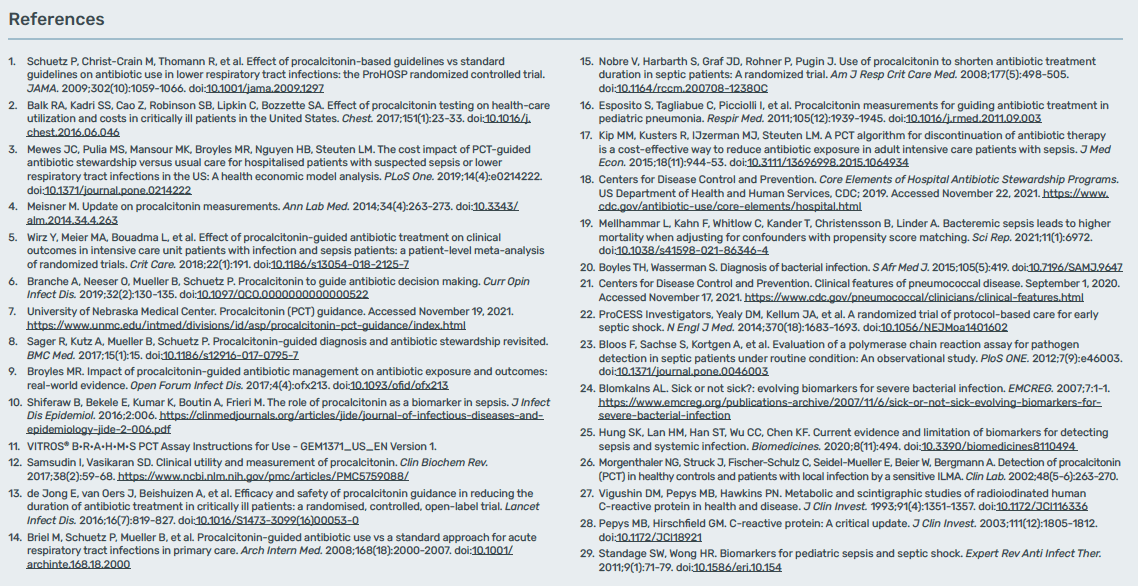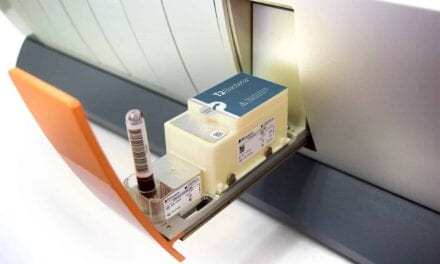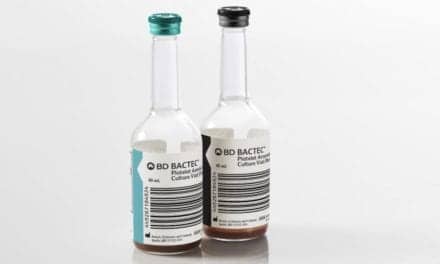Blood Cultures
Blood culture results — while definitive when truly “positive” — have significant pitfalls related to timing, sensitivity and specificity19,20:
- Serious bacterial infection (e.g., bacterial pneumonia) may not be accompanied by bacteremia or septicemia20,21
- Percent of patients with a clinical diagnosis of severe sepsis or septic shock and a positive blood culture can vary greatly (from 15% up to more than 50%); this variation can be affected by prior antibiotic treatment and clinical study design19,22
- Even when pathogens are present in the blood stream, growth confirmation in the lab can take days (usually 1-3 days, but sometimes longer),during which multiple critical management decisions and assessments of response to treatment will already need to be made20,23
Other bacterial cultures (e.g., sputum, urine, or wound cultures)
Like blood cultures, other bacterial cultures have significant pitfalls for serial clinician decision-making related to timing, sensitivity and specificity, including20:
- Results are not available immediately
- False negatives (pathogen present, but not isolated)
- Positives of indeterminant significance (e.g., growth from contamination or localized infections without systemic involvement)
White blood cell count (WBC)
Serial assessments of WBC counts have significant limitations as an input for timely, serial clinician decision-making, including low specificity for detecting infection20,24:
- Abnormalities of white blood cell counts correlate with non-infectious clinical conditions
C-reactive protein (CRP)
CRP has a low specificity for detecting systemic bacterial infection, such as sepsis, and may be suppressed by concomitant corticosteroid use4,20,25,26:
- CRP elevations can be triggered by trauma and inflammation unrelated to bacterial infection (e.g., surgery, burn injuries, cancer, etc.)
- The kinetics of CRP elevation response are slow, with levels increasing only >12 hours after causal precipitant, and peaking 36 to 50 hours after that precipitant4,27-29
Lactate
Lactate has significant limitations related to specificity4
- Lactate elevation may result from increased production or decreased clearance, both of which may be caused by conditions other than bacterial infection
- Lactate levels do not clearly differentiate severity of infection (e.g., septic vs. non-septic shock)
Right there in your lab, READY TO SERVE
Deciding in the dark, with less than conclusive data, a physician in your hospital just prescribed a course of antibiotics without the information they need. The danger of that bacterial infection can spread far beyond the patient — it can result in poor patient outcomes, spread to higher costs, infect your institution’s reputation, and add to the growing problem of antibiotic resistance.
By powerfully informing clinical decisions, VITROS® B•R•A•H•M•S PCT brings clarity to both diagnosis and treatment assessment, promoting potential:
- Improved patient outcomes
- Significant cost savings
- Lower rates of antibiotic use
Discover and appreciate the robust utility of PCT. Download your eBook now.
Sponsored by

Medqor is committed to protecting and respecting your privacy. We may contact you about our products and services or share information with sponsorship partners, as well as other content that may be of interest to you. By submitting your information, you consent to us contacting you for this purpose in accordance with our privacy policy.
For further information, please check out our privacy policy here






